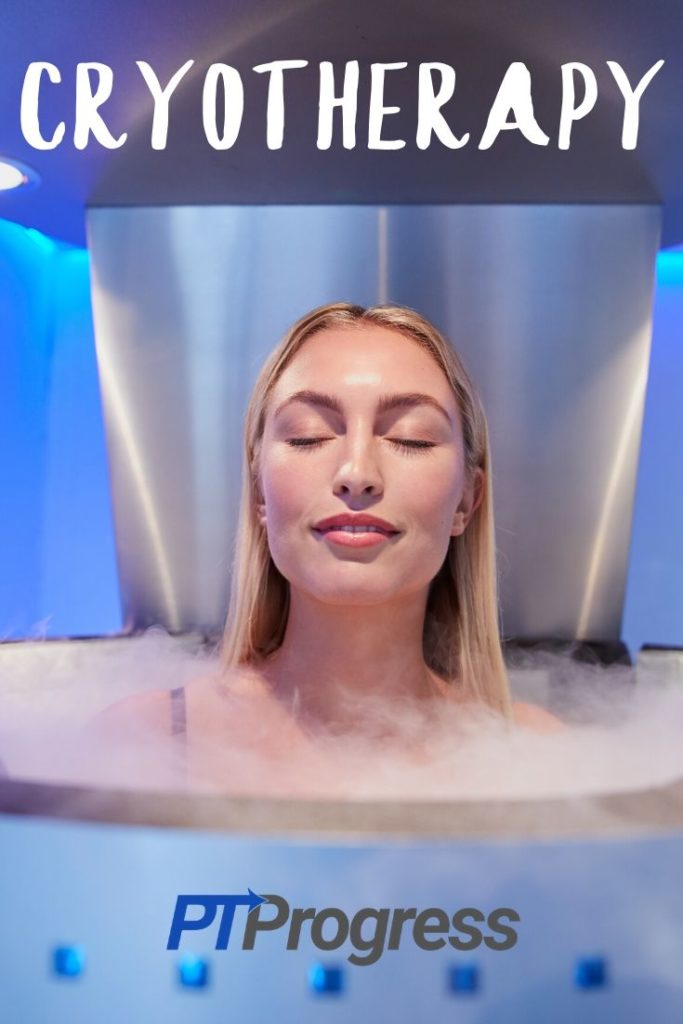
Although you may not have heard it referred to as cryotherapy, just about everyone reading this has had experience with cryotherapy at one point or another.
What is Cryotherapy?
Cryotherapy is the technical way to refer to the use of ice or cold to treat a variety of symptoms; most notably pain and swelling.
No doubt at least once in your life you’ve sprained an ankle or hit your elbow on something and ever since you were a kid you’ve been told “go put some ice on it”. While you may have used a bag of peas or a gel pack in the past, nowadays there are many ways to use cryotherapy…ice packs, ice massage, cold spray, ice baths, cryotherapy chambers…and the list goes on.
- RELIEVE PAIN EASILY - This reusable ice pad rapidly freezes for easy & frequent use. Hot or cold, it will ease your aches and reduce inflammation....
- COMPRESSION THERAPY - Alleviate pain and swelling using natural heat and cold compression. Use it as a microwave heating pad or as cold packs for...
Although ice and “cryotherapy” in general is used by therapists and patients alike frequently, and without a second thought, the evidence to support its use may not be as strong as you think. In this article we will explore the different types of cryotherapy, what cryotherapy is typically used for, and discuss the benefits/risks.
Types of Cryotherapy
Localized Cryotherapy
Local cryotherapy is what first comes to mind for most people when they think of cryotherapy. This includes ice packs, ice massage, and/or cold spray. Undoubtedly if you’re a therapist, you’ve used ice with your post-op or acute patients at the end of a session at some point in your career. With the exception of the occasional contrast bath, the vast majority of cryotherapy used in the clinic is in the form of a gel pack or ice massage. Just how effective is it? We’ll get into that below.
Whole Body Cryotherapy
Whole body cryotherapy is exactly what it sounds like. The use of an Ice Bath or Cryotherapy Chamber to decrease the temperature of the entire body, as opposed to one small area. The concept behind whole-body cryotherapy is that the intense cold throughout the body causes an initial vasoconstriction, followed by a vasodilation that improves oxygenation of the muscles.
When is Cryotherapy Used?
So, if you have an injury or muscle soreness what type of cryotherapy should you use? Well, it depends on the type and location of the injury.
Localized Cryotherapy
For acute injuries, and for patients who are post-surgical, local cryotherapy is the most appropriate and most widely used form of cryotherapy both in and out of the clinic. While whole-body cryo therapy is typically reserved for elite athletes with severe soreness following intense training, and/or those who believe in the potential metabolic and enzymatic effects and have the money to spend on treatments.
The evidence for use of cold packs has consistently shown that it provides effective short-term analgesic effects with acute soft-tissue injuries or after surgery. The key there is acute. When pain becomes chronic, the inflammatory process has long since resolved and the pain is no longer the result of this inflammation (if it ever was). Also worth noting, a study comparing cryotherapy with compression to cryotherapy alone found that cryotherapy with compression produced a greater analgesic, or pain-relieving, effect.
What about when it comes to sport performance? While much of the most recent research on sport performance has been on whole-body cryo therapy, one instance where local cryotherapy is still widely used is in baseball pitchers. A study published in The Journal of Strength and Conditioning Research in 2016 found that intermittent use of local cryotherapy on a pitcher’s throwing arm not only resulted in improved perceived recovery and decreased pain, but also improved performance by minimizing loss of pitch velocity.
- TARGETED ICE THERAPY RELIEF FROM A TRUSTED BRAND: Providing cool, soothing relief for post-surgery swelling and inflammation, joint pain and...
- QUIET, COMPACT AND PORTABLE: Designed for ease of use, the cooling therapy system is quiet, compact and easily portable with an integrated carry...
Whole Body Cryotherapy
Attempting to cool the body below skin level is very difficult, and virtually ineffective in someone with higher amounts of adipose -“fatty”- tissue. This is problematic because the optimal temperature to produce an analgesic effect has been found to be at least 13℃/54.5℉, if not colder. This is due to the release of a hormone/neurotransmitter called norepinephrine at this temperature. In order to achieve these body temperatures, when it comes to whole-body cryotherapy, the cryochamber must be cold. REALLY cold. We’re talking -60℃ for 30 seconds and then -135℃ for 2 minutes, as used in one study. That’s -211℉! Burr!
Although whole-body cryotherapy has been shown to cause a reduction in inflammatory mediators (think messengers that tell your body to initiate the inflammatory response), a study done on elite athletes found that although salivary testosterone increased when cryotherapy was performed immediately following sprint training, it had no effect on recovery or peak performance.
Overall, there is conflicting evidence on the effectiveness of ice baths and cryo chambers. Although the evidence supports its effectiveness on subjective reports of decreased soreness and stress, it does not seem to improve objective measures of functional performance. In other words, although athletes may report less muscle soreness with use of whole-body cryotherapy, the evidence does not suggest improved recovery or decreased tissue damage after intense exercise. Likewise, the commonly cited claims that whole-body cryotherapy can improve metabolism, boost energy, promote weight loss, and even reverse the aging process are largely unsupported.
It should also be noted, that if you’re not a professional athlete who has access to an ice tub or a cryo chamber, one session (which we’ve already established can be as short as just a couple minutes long) can cost between $20-80. Typically, this is not covered by insurance.
Benefits of Cryotherapy
- Pain relief
- Edema reduction
- Decreased muscle soreness after exercise/injury
- Improved perception of recovery (if not objective measures of recovery)
- Decreased muscle spasticity
- Mediated/decreased inflammatory response
Risks of Cryotherapy
- Short-term reduction in muscle elasticity and contractility
- Temporary redness or skin irritation
- Tissue damage (ie. frost-bite, necrosis, etc) with prolonged exposure
Contraindications
- Pregnancy
- Heart conditions
- Peripheral neuropathy
- Hypothyroidism
- Raynaud’s Disease
Final Verdict
Should you be using ice packs or ice massage after your total knee replacement or ankle sprain? Absolutely. The evidence is there to support both pain reduction and improvement in functional outcome measures. The risk of traditional local cryo-therapy is relatively minimal if proper application procedure is followed…which would include:
- Use of gel packs instead of “raw ice” for larger joints such as hips/knees/shoulder. Gel packs don’t get quite as cold and therefore, can be tolerated for longer periods allowing a deeper chilling effect throughout the joint
- If using ice/gel packs, apply over the injured area for 10-15 minutes with sufficient time without ice between applications to allow for the tissue to warm back up
- If using “raw ice” for ice massage, only perform for 2-3 minutes, or until numb (whichever comes first)
Should you be using ice baths or cryochambers for muscle soreness and to enhance training? The evidence isn’t as strong for this. If you’re an elite athlete looking for any edge you can get in your recovery and performance, then you’re probably already using ice baths or cryotherapy chambers. If you’re an “average joe” or “weekend warrior” looking to knockout that 2-3 days of soreness after the one or two runs or lifting sessions you’re able to squeeze in during the week, is it still worthwhile? Hey, if you have the cash and you’re anxious to try it or have tried it before and believe it’s helping, go for it. But currently, quality evidence doesn’t exist to support it and the potential benefits may not be worth that hefty price tag.

This article was written by Dan Murphy DPT, OCS. Dan graduated from Washington University in St. Louis in 2016 and lives just outside of Chicago with his wife and 2 year old son; though he and his wife are expecting a daughter in a few months! He enjoys playing board games and any outdoor activities with friends and family.
References:
Whole body: https://www.ncbi.nlm.nih.gov/pmc/articles/PMC3956737/ https://www.ncbi.nlm.nih.gov/pmc/articles/PMC5411446/ https://www.ncbi.nlm.nih.gov/pubmed/26383887
Localized: https://academic.oup.com/jhps/article/6/4/364/5610188
https://www.ncbi.nlm.nih.gov/pmc/articles/PMC4685204/
https://www.cochrane.org/CD007911/MUSKEL_cold-therapy-following-total-knee-replacement-surgery



